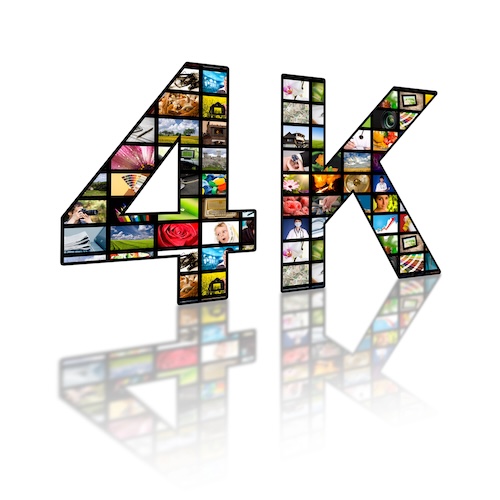Over-the-Top (OTT) and Connected TV (CTV) advertising have exploded in popularity over the past five years, becoming attractive channels for universities seeking to build brand awareness among prospective students and their families. Platforms like Hulu, Roku, Amazon Prime Video, and YouTube TV now offer universities access to premium video inventory in brand-safe environments. However, while OTT/CTV advertising offers undeniable benefits, it also poses unique challenges for higher education marketers focused on generating measurable enrollment outcomes.
This guide breaks down when and how universities should deploy OTT/CTV campaigns, how to optimize them for enrollment impact, and the key performance indicators that matter.
What is OTT/CTV Advertising?
- OTT (Over-the-Top): Video content streamed via the internet, bypassing traditional cable. Examples: Hulu, Sling TV, Amazon Prime Video.
- CTV (Connected TV): Devices that connect to the internet to stream OTT content. Examples: Smart TVs, Roku, Apple TV.
For colleges, these channels represent an opportunity to:
- Reach both students and parents during prime viewing hours
- Deliver rich video storytelling
- Build broad brand awareness in competitive markets
The Benefits of OTT/CTV for Higher Education Marketing
1. High-Quality, Brand-Safe Inventory
OTT/CTV inventory places university ads alongside premium content on trusted platforms, ensuring brand safety and a professional look and feel.
2. Cross-Device Targeting
Leverage household-level targeting to reach prospective students and parents across multiple devices within the same home.
3. Emotionally Engaging Storytelling
Video creative allows universities to:
- Showcase campus life
- Share student and alumni success stories
- Promote academic program strengths
4. Advanced Targeting Capabilities
- Geographic targeting by DMA, ZIP code, or radius
- Behavioral targeting based on interests and online behaviors
- Demographic overlays like age, household income, or parental status
5. Extended Reach Beyond Traditional TV
With declining linear TV viewership among younger audiences, OTT/CTV provides a scalable way to reach cord-cutters and digital-first households.
When to Use OTT/CTV Advertising in Higher Ed Campaigns
1. Awareness and Brand Building
OTT/CTV excels at creating visibility and mindshare early in the enrollment journey.
2. Promoting Signature Programs or Initiatives
Use OTT to spotlight flagship academic programs, new campus facilities, or unique student experiences.
3. Targeting Parents and Households
Parents—who are often decision influencers—spend significant time on streaming platforms, making OTT an ideal channel to engage them.
4. Event Promotion
Amplify reach for:
- Virtual open houses
- Preview days
- Financial aid workshops
5. Geographic Expansion Efforts
Target new markets where your university is lesser-known but wants to build brand recognition.
Creative Best Practices for OTT/CTV University Campaigns
- Keep videos short (15–30 seconds)
- Start with strong visuals of campus or students
- Include emotional storytelling or testimonials
- End with a clear call-to-action (CTA):
- “Schedule your campus tour”
- “Apply today”
- “Visit [University Website]”
Measuring OTT/CTV Performance: What Matters?
Unlike search or social campaigns, OTT/CTV is not primarily a lead generation tool. Measuring success requires focusing on the right metrics:
Primary KPIs:
- Impressions delivered
- Video completion rate (VCR): Industry standard is 90%+
- Cost per completed view (CPCV): Typical range is $0.03–$0.08
Secondary KPIs:
- Lift in branded search volume
- Website traffic spikes during campaign flights
- View-through visits (users exposed to the ad who later visit the site)
Foot Traffic Attribution:
Some platforms offer location-based attribution to measure if exposed households visit campus post-campaign.
OTT/CTV Budget Recommendations for Universities
How Much to Invest?
Given its awareness role and higher CPMs, OTT/CTV should represent 10–15% of the total paid media budget.
Average Costs:
- CPM Range: $30–$50
- Estimated CPL: $250–$350 (when factoring assisted conversions)
Smart Allocation:
OTT/CTV works best when paired with:
- Google Search and Meta Ads for direct response
- Site retargeting to nurture exposed audiences
Common Mistakes to Avoid in OTT/CTV Campaigns
- Over-Allocating Budget: OTT is expensive—keep allocations in check relative to performance channels.
- Using Non-Trackable Vendors: Always work with partners providing transparent reporting and measurement.
- Skipping Creative Testing: Run A/B tests on different video cuts, messages, and CTAs.
- Failing to Integrate with Other Channels: Ensure OTT campaigns complement your search, social, and retargeting efforts.
Real-World Example: OTT/CTV Higher Ed Campaign Success
Scenario:
Mid-sized regional university launched an OTT campaign promoting a new healthcare program.
Tactics:
- Targeted parents and students in key regional DMAs
- 30-second video ad highlighting student outcomes and career prospects
- Integrated with search and social campaigns
Results:
- 1.2 million completed views
- 94% video completion rate
- 30% lift in healthcare program page visits
- +22% increase in branded search during campaign
Future Trends in OTT/CTV for Higher Education
1. Programmatic OTT Buying:
AI-driven real-time bidding for more efficient targeting and pricing.
2. Interactive CTV Ads:
Clickable ads allowing viewers to request info or register for events directly from their smart TVs.
3. Deeper Attribution Models:
Improved cross-device measurement to connect ad exposure to actual applications.
4. Personalized Video Creative:
Dynamic content served based on user behavior or program interest.
Conclusion: OTT/CTV is a Powerful, But Complementary, Higher Ed Marketing Channel
OTT/CTV advertising offers universities a premium way to build brand awareness, engage parents and students, and amplify signature programs. However, it should be used strategically, supporting—but not replacing—performance-driven channels like search, social, and retargeting.
Key Takeaways:
- Allocate 10–15% of media spend to OTT/CTV
- Use emotionally engaging, concise video creative with clear CTAs
- Measure success via completions, site traffic lift, and search volume increases
- Always integrate OTT with lead-generation channels for full-funnel impact
For universities aiming to compete in today’s complex enrollment environment, OTT/CTV advertising provides the storytelling scale needed to differentiate—but only when deployed wisely.
Suggested Resources:
- Webinar: “Maximizing OTT/CTV in Higher Education Marketing”
- Video: “Real Examples of Successful CTV Campaigns in Higher Ed”
- Guide: “Measuring Enrollment Impact from OTT Advertising”
For expert help designing an OTT/CTV strategy that aligns with your university’s enrollment goals, contact Propellant Media today.

